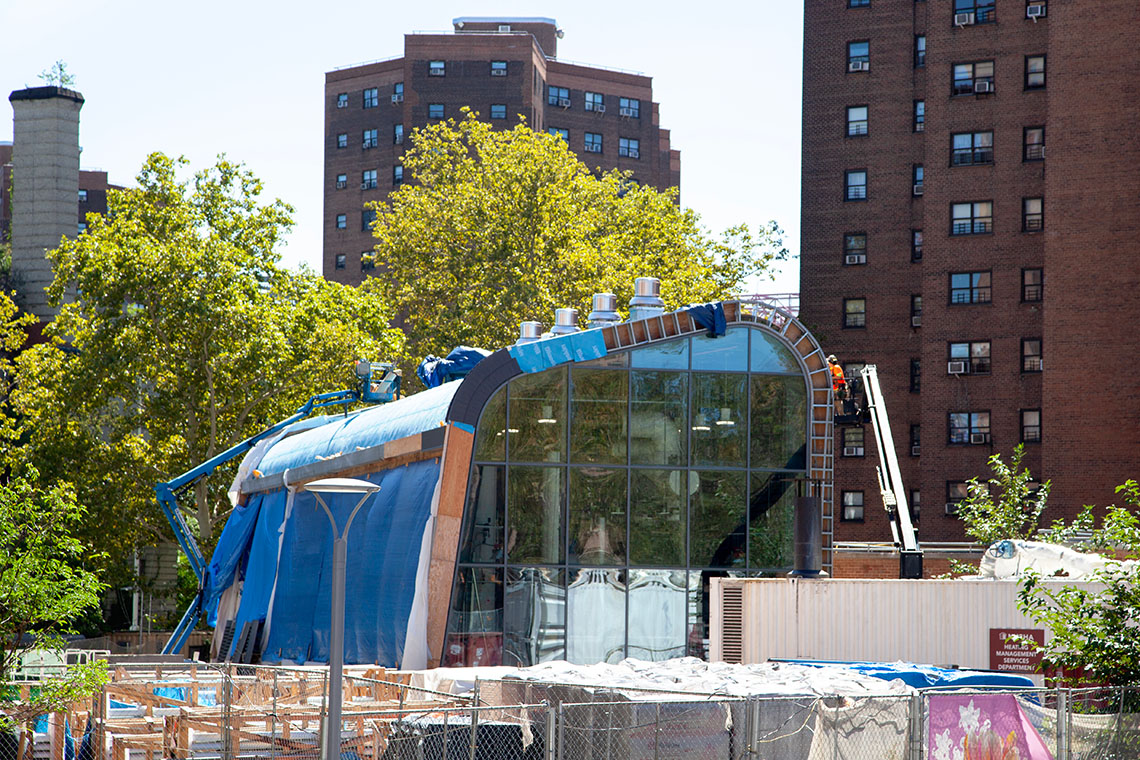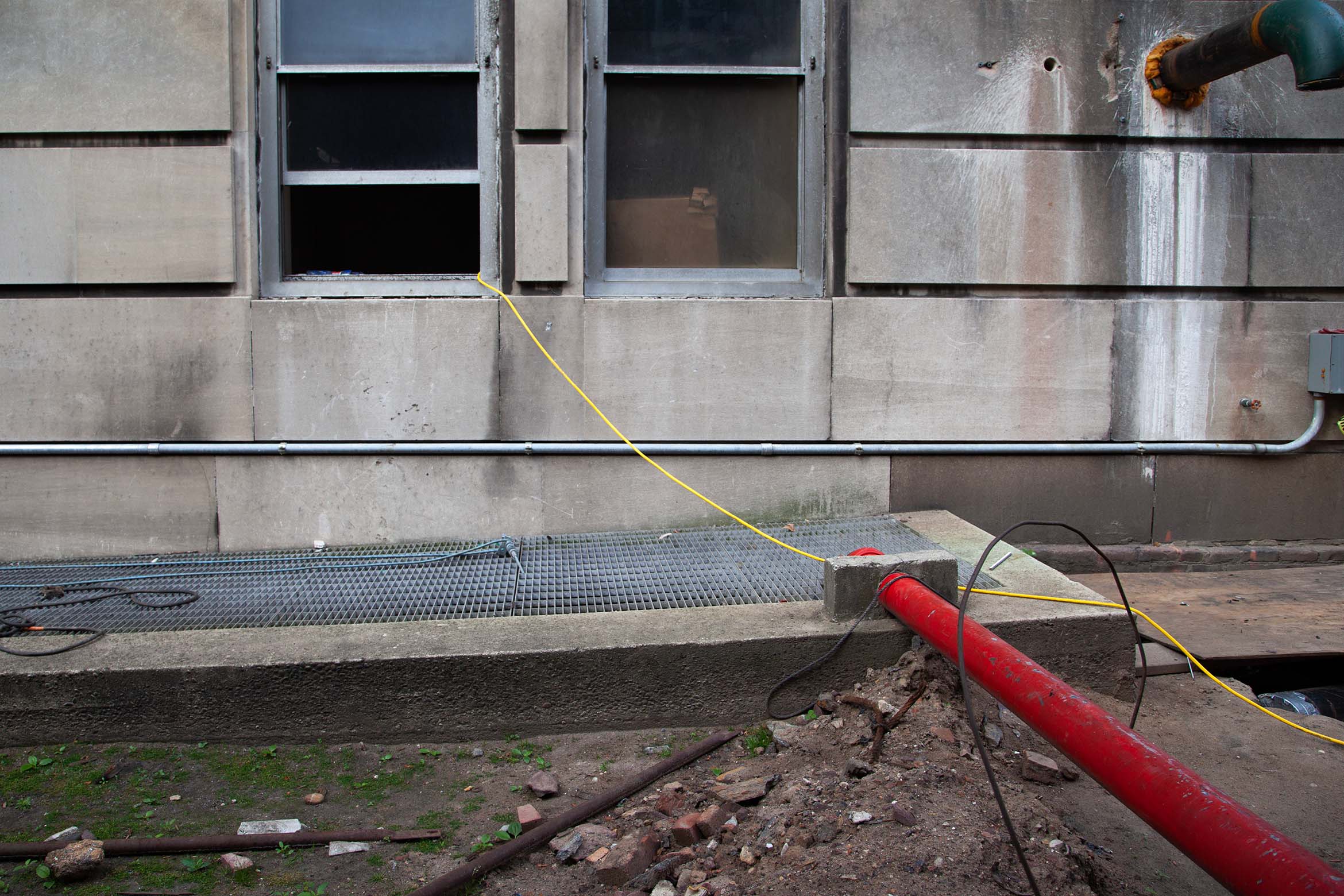The Green Shift
Climates are changing. Weather is changing. Cities are changing. Work is changing. Meet the people whose jobs put them on the frontlines of New York City’s response to the climate crisis.
We are celebrating 15 years — and counting — of stories that are deeply researched and deeply felt, that build a historical record of what the city has been.
It’s well known that climate change will require the development and maintenance of a vast array of new electrical systems, from solar farms to electric charging stations to induction cooktops. But what’s less commonly understood is that cities like New York are already doing a great deal to retrofit electrical infrastructure in response to climate impacts, and they have been doing so since Hurricane Sandy caused power outages and devastating flooding in 2012. Electrification is not only about futureproofing; it’s part of an ongoing recovery process. What does this process look like? Who are the people involved? What strange spaces around the city do they find themselves in? And what do they think about the role electrification will play in our daily lives and the green transition?
Ryan Cooke is an electrician, veteran, and dues-paying member of IBEW Local 3 who works to retrofit electrical services in New York City buildings, making them more resilient to extreme weather and increasing energy demand. He is also among a growing number of New Yorkers who plan to take advantage of government funding to support the installation of solar panels on his own dwelling. We talked with Ryan about his experience moving electrical services from flood-prone lower floors, as well as his forward-looking interest in the new green energy systems that he sees as vital to the future of his trade and urban life more generally. – AG & AH-C
How did you become an electrician?
I remember going to a job fair back in 2007. They had a program called Helmets to Hardhats, for veterans who are interested in joining one of the trades. I was in the Navy for about four years. I signed up on the website and Local 3 popped up on a list of eligible unions looking for aspiring electricians.
Could you give us examples of projects you worked on recently?
I’m working on Bellevue Men’s Shelter. It’s located on East 30th Street and First Avenue, right up against the East River. It’s basically on top of the water. It’s a big project. It’s been ongoing for the last three years. This is one of the jobs that resulted from Hurricane Sandy. A lot of the electrical service equipment, including emergency service equipment, went out of power when Sandy flooded the shelter’s basement. Right now, we’re removing the electrical service from the basement and first floor so that it won’t get flooded out again in the future. We had a similar job in a housing project down on the Lower East Side. They had the same problem.
The previous job you’re talking about was the NYCHA buildings by the Williamsburg Bridge, right? Is it true that the city had to build a whole new kind of substation to safeguard power for these buildings? What was your role on this project?
Basically the same thing as what I’m doing now, though I was an apprentice at the time. When the electrical services in the basement got flooded, NYCHA decided to build a new electrical service building itself. Residents who live in the development were particularly affected by the loss of power during and after Sandy, especially the ones who are bed-ridden and reliant on life-support equipment. The buildings were out of power for a couple of months. So that’s why the city, in conjunction with FEMA, partnered together to upgrade these buildings that are so vulnerable.
Do you see your colleagues doing a lot of work moving infrastructure from the basement up to upper floors? That’s happening across the city?
Yeah. It’s really important work.
Can you explain, for someone unfamiliar with work on electrical infrastructure in buildings, what the nitty gritty of your work is? What does an average day look like for you?
I take out old systems and put in new panels. I disconnect the old switches that come directly in from Con Edison’s service lines, and I figure out how to put the new wiring and switches in. I’m doing this while moving things up one floor. Anything that is too old or damaged I obviously have to replace.
Can you tell how old the switches and wiring are?
Oh yeah. Because the old wiring has cloth insulation on the outside wrapped around the solid copper inside. The new wires are insulated with what looks like plastic.
How old are we talking?
From the 1930s. Sometimes you go down into the basement and it’s like a horror movie. Things are old and it’s spooky. In addition to the old wiring in the basement there are these big old furnaces. The rumor is that anytime somebody died at the shelter they burned the bodies in one of the furnaces.
Terrifying! How many folks are working on this project? Hopefully you have company down there among the haunted furnaces.
Right now, we have six guys. It’s not an enormous project, but it’s steady work for us. The New York City Housing Authority and Department of Homeless Services have their own electricians, so we work in conjunction with them. We have to be in constant communication about where we can work and where we cannot work because, obviously, we have a lot of residents in the NYCHA buildings. One of the buildings has been housing migrants coming from Venezuela. We have to be mindful of that while we work on that building.
You’ve been working these jobs created by the flooding from Hurricane Sandy. In what other ways have you, your work, and the people you know been affected by climate change?
We are planning to install solar panels on the roof of my house. That’s going to save a tremendous amount of money. You get subsidies for installing any green energy equipment, and it gets you off of Con Edison’s grid. I learned how to do this from my uncle, who is doing the same thing on his roof. So that’s how climate impacts us.
Will you install the panels yourself?
I don’t have the experience, so no. I like to know what I’m doing first before I do it.
What about other impacts of global warming?
Extreme heat can lead to flooding. If you remember, there was a major rainstorm in early fall of 2021. Everything was shut down because of heavy flooding on all the major highways. Every subway line was affected by it. It took two days before everything got up and running again. That affects me and everyone who commutes.
You lost days of work?
Yeah.
Is extreme heat also something that causes you to lose work? Local 3 has rules that state that you can’t work if it gets too hot.
Heat exposure rules limit the number of hours that you can work outside, or the hours that you can be exposed to sources of heat. But on days that are too hot, they will find you work to do inside.
How do you feel more generally about the way our electrical infrastructure is set up to deal with hotter temperatures? It’s seemed that the power grid in NYC has been increasingly stressed because of the greater air conditioning use that corresponds to temperatures getting higher and higher.
Heat has been a thing that’s caused blackouts. In 2003, New York City had a blackout because there was a higher consumption of electricity. I think that’s why a lot of folks are going into installing solar panels and other kinds of alternative energy — to alleviate some of the stress put on the main system, which is being fed electricity from outside the city. That’s why New York State is having all these programs and incentives for people to use alternative energy.
You’ve been an electrician for seven years now. How do you see your work being affected by climate change going forward? Do you notice your colleagues talking about it this?
In our union, we’ve been talking about the possibility of work relating to electric cars. Major car manufacturers are saying that they’re going to get away from combustion engines and into all electric. There are all these charging stations that are going to be built over the next few years. I’m pretty sure our unit is working on securing some of the contracts to build them.
When you imagine the future that will be inherited by the next generation of electricians, what do you see? Do you think it will be a good job in twenty or thirty years?
You always need electricians. And Local 3 has been around for 100-something years. As long as you need electricity, that’s not going anywhere. You may do alternative ways of powering, but whether it’s nuclear or steam-powered, solar, wind, or even hydroelectric, you always need electricians to maintain the power lines and the main power distribution networks. But anyone working in the fossil-fuel industry, of course, is going to have to change their work.
What do you think the general opinion of other New York City electricians is when it comes to the shift to greener technologies?
We know it’s more opportunity for us. We understand that the world changes with changing technology. We say at Local 3, you have to adjust to new technologies. We embrace change. We like working on new things. Anything that’s new, that’s going to help the environment, or any new technology, we always want to be at the forefront of it because that’s what makes us more marketable. Anything that has to do with alternative energy or anything like that, we bring into our training center to teach our members how to deal with that stuff.
Are you or other electricians you know proud to participate in electrification and the green transition?
Yes, because it’s the way to the future. As far as getting politicians on board, that’s a different story. It’s so polarized. Both parties can’t agree on how to fix or deal with climate change. It’s mostly about the lust for money. Obviously capitalism gets in the way of doing what’s right. And it seems to me that in this country, we wait till we have a major disaster, a catastrophe, before we do anything, instead of doing something to prevent it. That’s the problem. We have all these people ready to go. They’re energetic, they’re motivated, they have the technology to help improve the environment and prevent a major catastrophe from happening. We can’t play God, of course, but we can do something.
The views expressed here are those of the authors only and do not reflect the position of The Architectural League of New York.
Climates are changing. Weather is changing. Cities are changing. Work is changing. Meet the people whose jobs put them on the frontlines of New York City’s response to the climate crisis.


